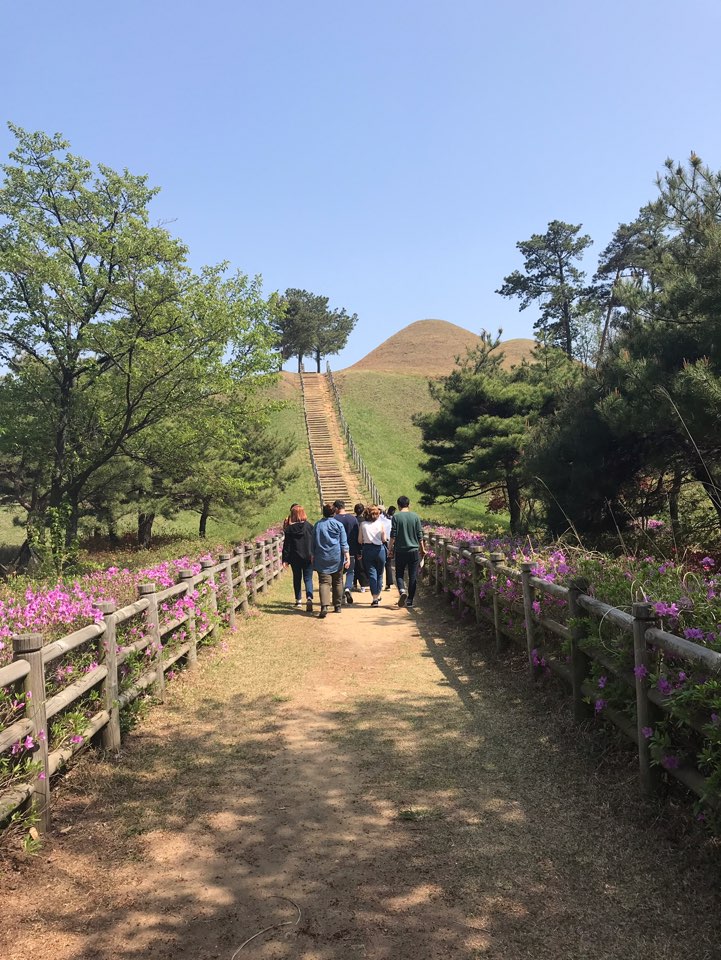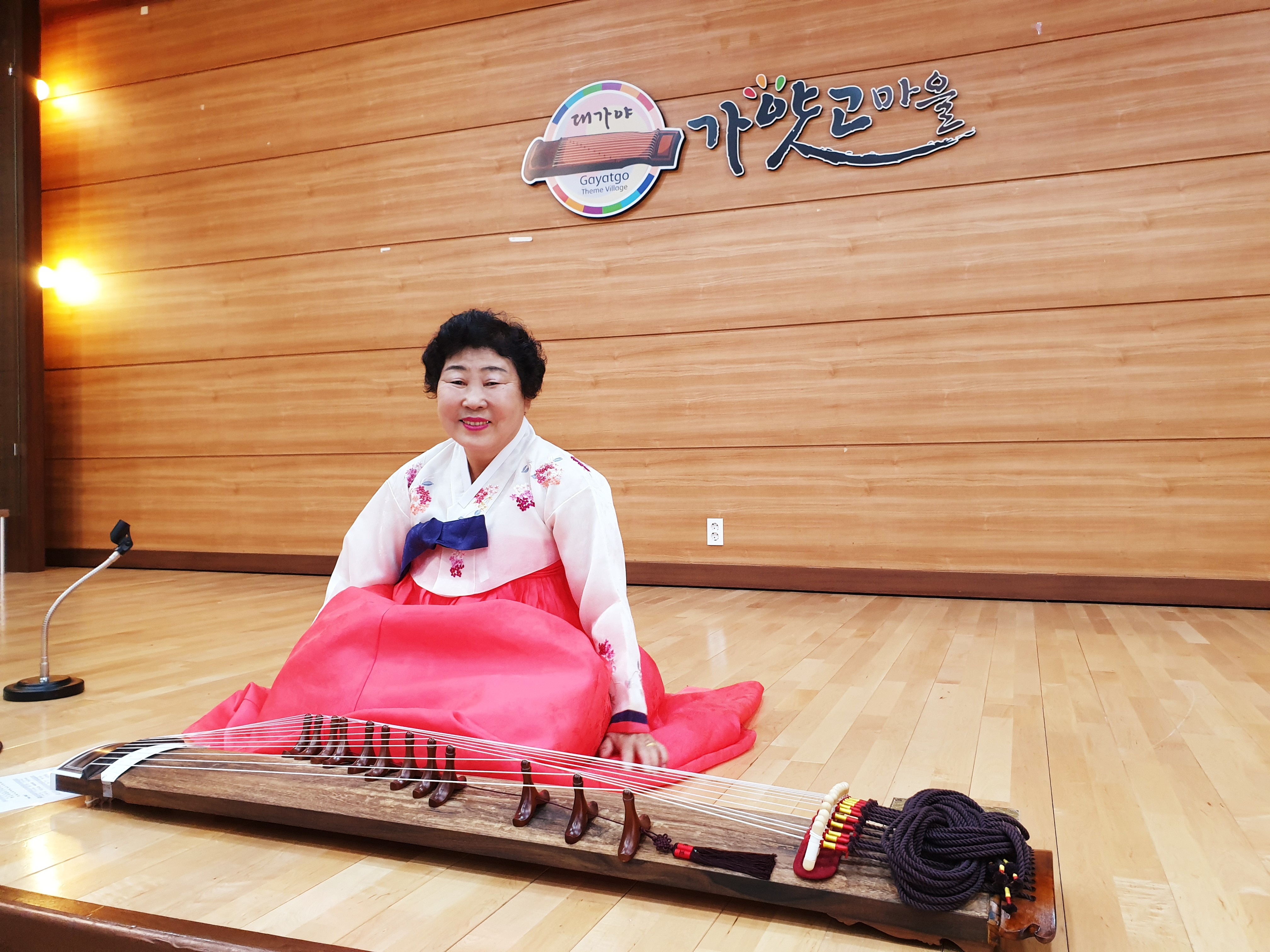Mystical Gaya: “A Museum Under the Sky” in Daegaya
Written and photographed by Baha Komilov
When it comes to travel around Korea, there are many beautiful and amazing places to visit, like Jeonju, Suncheon, Seoul, and Busan, among many others. However, there is one place much less promoted on tourist websites or social media platforms. Recently, I had a chance to visit Daegaya
(대가야), which is the county seat of Goryeong County
(고령군, just southwest of Daegu) and a historic site where the glorious culture of Gaya flourished. I spent two days there with my friends; our trip was amazing and full of great experiences.
The first thing we stopped to do was to experience the sounds of the gayageum (가야금, a somewhat zither-like, traditional Korean musical instrument) in Gayatgo Village (가얏고마을). The gayageum is one of the symbols of the village and consists of a body, 12 strings, and a moveable bridge. As local people have said, this village offers the best gayageum experience hall in the whole country. Actually, they were right, because the staff members there were really friendly and good at their jobs. We had an hour to learn and practice the instrument, and it was enough time to learn and practice a few things. It was an absolutely amazing experience that you must try, even if it is your first time playing any instrument. After the activity, we were served some Korean dishes that were prepared by local residents at the cafeteria behind the hall.

If you are someone who likes visiting museums and taking a look at historical art and exhibitions, then you will be in the right place by visiting Goryeong. During our trip, we had a chance to visit Ureuk Museum, where you can see and get familiar with the origins of the gayageum. It was opened to spread the excellence of guk-ak (국악, traditional Korean music). The place was actually built in the shape of a gayageum and was dedicated to the gayageum and Ureuk (우륵), the gayageum’s creater and also a great musician. This is the only museum of its kind in that it excavates, collects, preserves, and displays pieces that help visitors more deeply appreciate the beauty and history of the gayageum. Another good thing about the museum is that it is only a 15-minute walk from Gayatgo Village, where we learned how to play the instrument. Later on, we continued our trip by visiting Daegaya Museum, which is an exhibition hall for the history and culture of Daegaya. The museum is divided into two parts: the Daegaya History Pavilion and the Daegaya Royal Tomb Pavilion (a big black circular tomb). Honestly, I am not a huge fan of visiting museums, but this one has important original artifacts, such as earthenware, ironware, and gilt bronze crowns, which were all exhibited to showcase Daegaya’s splendid culture. The area also features enduring Daegaya pottery, a helmet and crown puzzle, and a printing experience with a pantograph. The place is also child-friendly, with a space for kids to enjoy their time by experiencing the traditional culture of Daegaya. After enjoying all of the indoor exhibitions, it was time to walk and relish the outdoor exhibitions, which are located on your right when you leave the museum. The first thing you will see is the Hall of the Royal Tombs, which is the sacred burial place of Daegaya’s kings, royal families, and nobles. It is also a representative site that best reveals the prosperity of the Great Gaya Confederation (42–562 A.D.). Jisan-dong Tumuli contains the first communal gravesite discovered in Korea, over 700 ancient tombs of different sizes distributed throughout the area. This area was selected to be on the tentative UNESCO World Heritage Listing in 2015.

Another great experience was Gesil Village, which resembles Jeonju, as 80 percent of the village is comprised of hanok (한옥, traditional Korean houses). We stayed overnight in the village, and it was definitely one of the best village experiences ever. The lady who was the owner of our hanok cooked us a delicious breakfast. It felt like we were in the Pixar movie Ratatouille. The village offers visitors many activities, such as making yeot (엿, Korean taffy), staying in a hanok, a village tour, and various other experience programs. We finished our tour by visiting a tomato farm, where we picked our own tomatoes – which could also be another good experience for those who have never done farm work before. Moreover, we also visited the Daegaya Street Market and had lunch there. As our time was limited, we could not do many activities, but Daegaya offers many more experiences, like the Burye Forest Adventure, the Daegaya Experience Camp, horseback riding, and seasonal festivals like the Goryeong Cosmos Festival with fireworks, street musical events, acoustic guitar performances, and fusion gayageum performances.

Daegaya in Goryeong County is more than a tourist spot. I would consider it a “museum under the sky.” A trip to Daegaya saves you both time and money, as you are able to experience most things at one time and all in one place. And that one place is southwest of Daegu – not such a long distant for a fantastic experience! So, why not visit soon, and make a great memory in Korea?
The Author
Baha is originally from Uzbekistan, but he considers himself a global citizen. He has been in Gwangju for three years and is a student at Chonnam National University, majoring in international relations and diplomacy. He’s a passionate language learner and is fluent in five foreign languages, with German being his sixth language.







